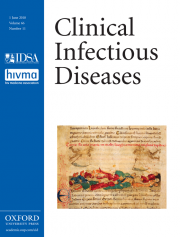Posted on May 06, 2014
Source: Clinical Infectious Diseases

Voucher Incentives Improve Linkage to and Retention in Care Among HIV-Infected Drug Users in Chennai, India
Sunil Suhas Solomon, Aylur K. Srikrishnan Canjeevaram K. Vasudevan Santhanam Anand Muniratnam Suresh Kumar Pachamuthu Balakrishnan Shruti H. Mehta Suniti Solomon Gregory M. Lucas
Background. Drug users (DUs), a population that accounts for some of the fastest-growing human immunodeficiency virus (HIV) epidemics globally, lag behind other populations with regard to HIV-related outcomes. We evaluated the role of voucher incentives on linkage and retention in care among DUs in India.
Methods. In this randomized clinical trial, 120 DUs who were aged ≥18 years, HIV-infected, antiretroviral therapy (ART) naive, and ART eligible and who reported drug use in the prior month were randomized to incentive (INC) or control (CTL) conditions for 12 months. Participants randomized to the INC arm received incentives (redeemable for food/household goods) ranging in value from USD4 to USD8 for achieving prespecified targets (eg, ART initiation, visits to ART center). Subjects in the CTL group could win vouchers in prize-bowl drawings, but HIV care behaviors were not incentivized. The primary endpoint was time to ART initiation.
Results. Sixty participants each were randomized to the INC and CTL arms between December 2009 and September 2010. Participants in the INC arm were more likely to visit the government ART center (49 vs 33; P = .002); 27 participants in the INC and 16 participants in the CTL arm initiated ART (P = .04; hazard ratio for ART = 2.33 [95% confidence interval, 1.15–4.73]). Participants in the INC arm also had significantly more visits to the ART center (median number of visits, 8 vs 3.5; P = .005). However, no difference in viral suppression was observed.
Conclusions. Modest voucher incentives improved linkage to and retention in HIV care, but did not significantly impact viral suppression among DUs in India, a disenfranchised and difficult-to-treat population.